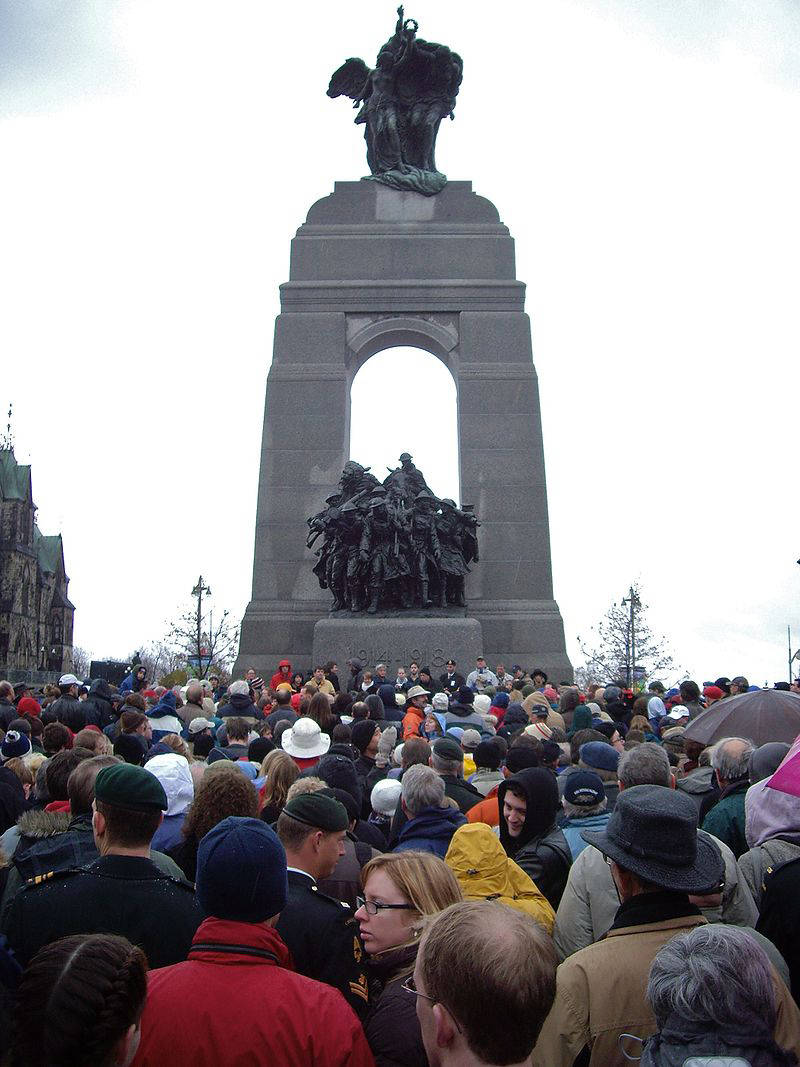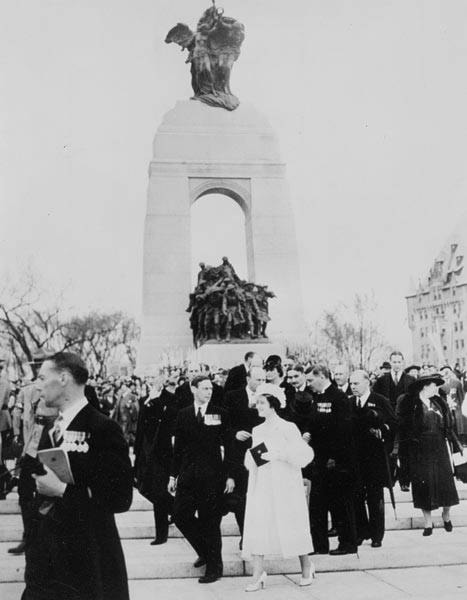“If only this bill could talk, what a tale it could tell.”—Bertha McHattie.
Further to Wednesday’s special Remembrance Day edition, these nuggets:
Firstly, this quote from retired Canadian Gen. Romeo Dallaire OC CMM GOQ MSC CD about Remembrance Day and why we should care: “It is a fundamental duty of the citizenry to feel that pride [of Canadian sacrifices]. And to express it. To express it by being there [at Remembrance Day ceremonies], to express it by buying the poppy, to express it by shaking the hands of a vet or a serving soldier. Actually stopping somebody in uniform on the street and thanking them.”
A year ago, Canadians were polled as to how they thought Canada should recognize its military past while celebrating its 150th birthday celebrations. “A vast majority” (76 per cent), according to a study commissioned by Historica Canada, said they’d like a Canadian war memorial similar to the United States’ Vietnam Wall which lists the names of those who have died while serving in their country’s military.
Although we’ve long had the national war memorial in Ottawa, which was originally built to honour Canadians who fell during the First World War, even more Canadians polled (86 per cent) said they wanted more in the way of a national monument for this purpose.
According to Historica Canada chief executive Anthony Wilson-Smith, the poll confirms a populist sentiment that has been evident for some years: “We continue to see very strong support that transcends political divisions or even philosophical difference for the principle of honouring veterans,” he told The Canadian Press.
What’s wanted, apparently, is “a single, comprehensive monument [with a] consistent theme,” a single point at which to congregate and pay tribute to soldiers who fell in conflicts spanning the First World War to the more recent mission in Afghanistan, as opposed to the hundreds of cenotaphs and memorials across the country.
The question of Canada’s military history and accomplishments being taught in schools drew a negative view (62 per cent) that it’s being done satisfactorily. This opinion was said to contradict recent teaching trends in middle and high schools across the country.
(In a separate survey of history instruction in middle and high schools, Historica Canada gave As to four provinces and one territory — a marked improvement from 2009 when it issued no As and failed four provinces. Interestingly, 89 per cent of respondents believe that the best way to teach youth is by having veterans speak directly to them.)
Last December, it was reported that an ex-German prisoner-of-war had left his life’s savings to a small Scottish village where he was imprisoned during the Second World War.
Heinrich Steinmeyer, of the Waffen SS, was 19 when he was sent to the POW camp at Cultybraggan near the village of Comrie in Perthshire. So attached did he become to his former captors that he paid several return visits over the years and, upon his death in 2014, bequeathed an estate valued at more than $500,000 to the “elderly” in the village.
It should be noted that the Waffen SS was formed as the armed wing of the Nazi Party’s SS organization. Its formations included men from Nazi Germany, along with volunteers and conscripts from both occupied and unoccupied lands, and ultimately grew to 38 divisions that served alongside the regular army as uniformed police and security units.
It was these duties that led to war atrocities and a judgment at the Nuremburg trials that the Waffen SS were a criminal organization responsible for crimes against humanity.
At age 19, and likely a conscript, it’s unlikely that Heinrich Steinmeyer can be held responsible for such activities. Perhaps he realized that his capture and imprisonment were his salvation in more ways than one and that explains his posthumous gift to Cultybraggan.
Forty-plus years ago, Victorian Bertha McHattie had a $1 bank note that she valued for much, much more than its nominal purchase power; she cherished it enough to keep it in a safety-deposit box.
It had been handed down to her by her parents who’d also treated it as a treasure beyond calculable worth — even back in the Great Depression of the dirty ’30’s when a dollar had real purchase power and at a time when money for the family was scarce.
The worn and soiled dollar bill, printed in January 1911, bears the portraits of the Duke and Duchess of Connaught, he then being the governor general of Canada. The vice-regal couple paid a well-publicized official visit to B.C. in 1912. In the 1920s a family member acquired the bill in change from a small country store in Rounthwaite, MB.
But none of that makes this dollar bill special. It’s what’s written on the back that makes it a treasure. Some unknown person has written, “Found on Vimy Ridge, April 9, 1917.”
Who, Mrs. McHattie, wondered, wrote that terse message? The battle for Vimy Ridge, one of the most famous of the First World War and accepted today as a seminal event in Canadian history because Canadian soldiers under a Canadian general succeeded where their allies had failed, was fought April 9-12, 1917.
Someone picked up Mrs. McHattie’s dollar bill on the first day of battle. “What a lot of questions that raises,” she marvelled in 1976. “Who wrote it — a Canadian soldier?
“If only this bill could talk, what a tale it could tell.”
Indeed.

